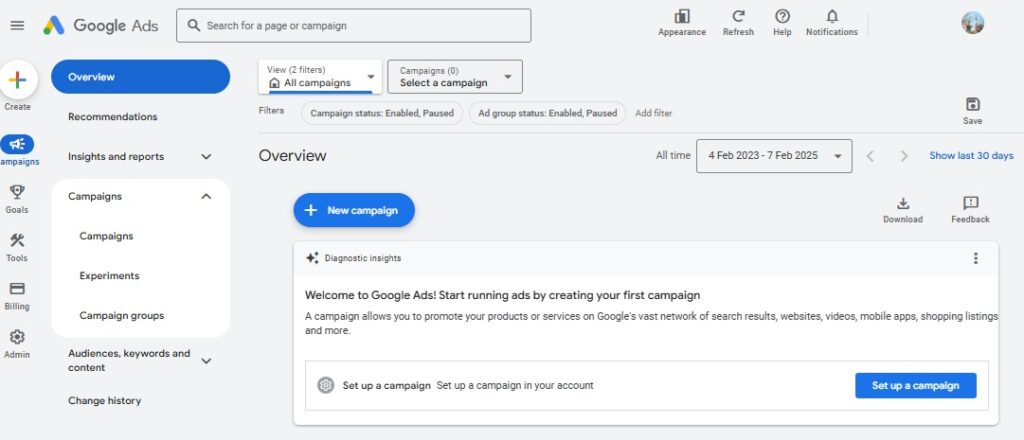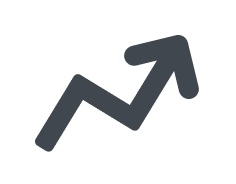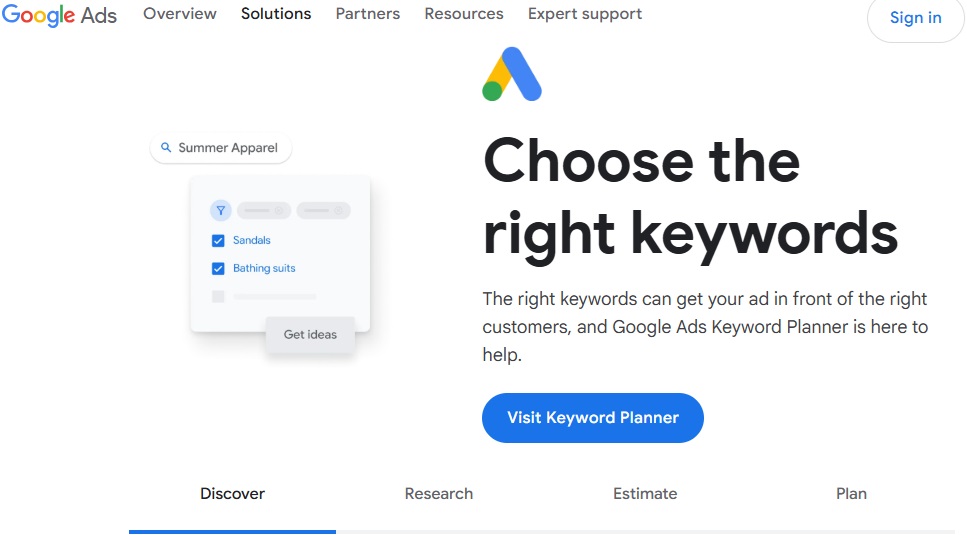Google Ads is a tool to put your business in front of customers who are already searching for what you offer. By far the world’s leading Pay-Per-Click (PPC) advertising platform, it gives you the tools and control you need to run campaigns, track their progress, and switch things up as needed.
And it’s simpler than you might think, even for the non-technically-minded small business owner! With a good choice of keywords and a well-aimed campaign, you can put your business on the map — no need to call that advertising agency.
What is Google Ads and how can it help your business?
Since launch in 2000 (as Google AdWords), Google Ads has grown into the internet’s biggest Search Engine Marketing (SEM) platform, used by over 1.2 million businesses worldwide today.
‘Ads operates on a Pay-Per-Click (PPC) model. That means you only pay when someone clicks on your ad. No clicks, no charge. So while it isn’t free, it’s a very cost-effective way to get your business in front of people who are searching for the right keywords.
Internet ads are more targeted and measurable than traditional advertising. Unlike billboards or magazine ads, where you pay regardless of whether anyone notices, Google Ads lets you set your own budget and track performance so you can see exactly where your money’s going.
The beauty is that it lets you reach potential customers who are already searching for what it is you do — be that a baker in Bristol, a hairdresser in Harrogate, a florist in… you get the picture.
Google claims that there’s a return of $8 for every $1 spent on Google Ads. While that’s an average across all ads and industries (and surely a tall order for smaller online business), it can certainly do a lot to get your business noticed online.
Around 65% of small- to medium-sized businesses (SMBs) are running their own pay-per-click (PPC) campaigns, with an average conversion rate of 2.35%. Interestingly, paid ads perform five times better on mobile devices compared to desktop computers, which just goes to show the importance of having a website well-optimised for mobile.
You really don’t need to be a marketing expert to get started. With a simple interface, in just a few clicks you can be running your own campaigns and tracking their performance.
SEO vs SEM
Search Engine Optimisation (SEO) is all about improving your website’s position in search results naturally, without paying for ads. The focus is on things like keywords, content, and “backlinks” (links between sites) to help your site rank higher over time. It’s a slow process, but it works.
Search Engine Marketing (SEM), then, is about paid ads that put your business in front of potential customers pronto. Google Ads falls under the SEM category: you pay to appear at the top of search results immediately. While SEO builds long-term, SEM helps you get noticed right now.
We’ll assume you’ve already built a great website with Website Builder or WordPress. There’s a useful guide to local SEO, below. Be sure also to create a Google Business Profile so you can get found on maps. Add Google Ads to the mix and you’ll have all the right tools in place to get found exactly where your potential customers are searching.
For more: Local SEO in 10 – How Do I Get My Business Found Online?
How to get started with Google Ads
Getting started with Google Ads is straightforward – let’s walk through the steps.
First, you’ll need to create your Google Ads account. Simply head over to the Google Ads homepage, sign up, and follow the prompts to set up your account.
You’ll need to enter your business information. Start by adding your business name and website. If you’ve got any existing Google accounts (like Google Analytics or Google Merchant Center), linking them will speed things up and give you helpful suggestions as you go.
Once you’ve decided on your goal, you’ll be ready to set up your first campaign.
How to create ads that get customers
1. Pick Your Campaign Goal
Next, think about what you want your ads to achieve. Google Ads can help you meet a variety of goals:
- Drive clicks to your website or landing page
- Generate leads through contact forms or phone calls
- Boost sales by promoting products directly on your site
- Promote app downloads if you’re running a mobile app
- Increase brand awareness to get your name out there

Decide what you want to achieve with your campaign—whether it’s boosting sales, gathering new leads, or getting more people to recognise your brand. Google will suggest the best campaign types to match your goal.
2. Set Up Your Campaign
Here, you’ll need to add key details like location, language, and device preferences. You can also choose your bidding strategy (like targeting cost-per-action or manual cost-per-click) and set your budget, either for the day or for the whole campaign.
3. Create Your Ads
When creating your Google Ads, your headline is your first chance to make a great impression. Be sure to include your main keywords and highlight what makes your offer stand out—something like “Fast Plumbing Services in London” or “Free Delivery on All Orders” works well. This grabs attention and quickly tells people what you’re all about.
In your description, go into a bit more detail and include a clear call to action (CTA) like “Book Now” or “Find Out More.” Keep it concise but focused on what sets your business apart from the competition.
You’ll also need to decide which type of ad is best for your needs. If you’re promoting a product, shopping ads might be the way to go. For service-based businesses, text ads can be very effective. Want to make a visual impact? Consider display ads. Choose the format that fits your business and goals best.
4. Choose Your Audience and Keywords
Think about the type of people you want to reach—based on things like location, interests, or age. Google will suggest keywords to help you target the right audience and extend your reach where it matters.
5. Set Up Conversion Tracking
Before you launch, make sure you’ve set up conversion tracking on your site. This will let you track important actions, like purchases or sign-ups, so you can measure how well your ads are performing.
6. Review and Launch
Go over everything—settings, budget, ads, and audience—and then add your payment details. When you’re happy, hit “Launch” to get your campaign going.
Once your campaign is live, monitor its progress. Look at metrics like clicks, impressions, and conversions to see how your ads are performing. Use this info to tweak and optimise your campaign, ensuring better results as you go.
How to choose the right keywords for your campaign
Choosing the best keywords is key to creating Google Ads campaigns that work. Here’s how to get started.
Start by using Google Keyword Planner, a free tool that helps you discover keywords related to your business. Simply type in a few words related to what you offer (e.g., “digital marketing” or “flower delivery London”), and it’ll suggest other terms people are searching for. This helps you find the right phrases to target, ensuring your ads reach the right people.
Focus on long-tail keywords – these are longer, more specific phrases (like “vegan bakery near me” or “dog-friendly hotel in Devon”) that are less competitive and more likely to convert. People who search for long-tail keywords tend to be further along in the buying process and ready to act.
When you’ve chosen your keywords, you’ll need to decide on a match type:
- Broad match gives you a wider reach but less control
- Phrase match lets you target more specific phrases
- Exact match is the most restrictive but gives you the most control
- Negative keywords help you exclude irrelevant searches (e.g., if you’re selling high-end shoes, you might want to exclude “cheap shoes”)
By selecting the right mix, you’ll make sure your ads are shown to the right people at the right time.
Also, don’t forget abut Google Trends. It can help you spot new opportunities and track what people are searching for. This can give you a competitive edge.
See also: How to Use Google Trends for Your Online Business
Targeting the right audience
Target specific locations to be sure you’re reaching the right audience. If you run a local business, focus on your city, region, or even specific postcodes. This way, you’re only showing your ads to those who are most likely to need your services.
You can also narrow down your audience by age, gender, or even interests. Personalised ads can make a big impact, perhaps increasing sales by as much as 30%.
If your product is perfect for a certain age group or demographic, tailor your targeting to match. For example, if you sell outdoor gear, you might target people interested in hiking or camping.
Another option is the idea of retargeting. This lets you show ads to people who’ve already visited your website but didn’t take action. By reminding them of your offer, you can increase your chances of converting them into customers.
Going, going, gone: Setting your budget and “bidding”
When you’re running Google Ads, bidding is how you decide how much you’re willing to pay for each click on your ads. You’ll want to decide whether a daily or monthly budget works best for your business and goals. If you’re new to advertising, it’s a good idea to start small, then gradually increase your budget as you begin to see what’s working. Finding the right balance between spending and results is key.
[Image: google-ads-bidding-strategy] Caption: Setting a budget is one of the first steps in any Google Ads campaign.
Once your budget is sorted, it’s time to choose your bidding strategy. If you prefer full control, manual bidding might be the way to go. With this option, you set the maximum amount you’re willing to pay per click.
If you’d rather let Google handle things, automated bidding can be a handy choice. It optimises your bids to get the best results within your budget, making it a solid option for those looking for a bit more convenience.
Display ads vs search ads
Search Ads show up when someone types specific terms into Google, like “plumber in Manchester.”
Your ad appears at the top of the results when customers are actively searching for a service like yours.
Display Ads, on the other hand, show up across the web — on blogs, videos, apps, and more. These ads target people based on interests, even if they aren’t searching for your business. For example, if you sell gym equipment, your ad might show up on a fitness blog, reaching potential customers who may be interested but aren’t actively looking yet.
You can manage both from the same platform, where you set your budget, choose your targeting, and track your performance.
The main difference is how they reach people: search ads target those actively looking for your product, while display ads help you reach potential customers based on their interests, even if they’re not searching for you at that moment.
How to measure your success
Once your ads are up and running, it’s important to keep track of how well they’re doing. Track key metrics like:
Click-through rate (CTR): Shows how many people click your ads.
Conversions: Tracks how many clicks turn into actions, like purchases or enquiries.
Return on ad spend (ROAS): Checks if your ads are delivering value for the money spent.
Linking Google Ads to Analytics offers deeper insights into clicks, conversions, and return on investment (ROI). Tools like Google Trends can uncover keyword opportunities, helping you adjust ads to stay ahead of the competition.
For more, check out: Google Analytics: A Guide For Your Online Business
Tip: Make sure your landing page works for your ads!
A well-matched landing page is the secret to turning ad clicks into results. When someone clicks on your ad, they should land on a page that directly reflects what was promised – whether that’s a discount, service details, or a way to get in touch. The clearer and more focused the page, the more likely visitors are to take action.
A slow-loading page or one that’s tricky to navigate on a phone can drive potential customers away. A mobile-friendly, professional-looking page keeps users engaged and makes it easy for them to take the next step.
Looking to create a landing page without the fuss? 123 Reg Website Builder can help you quickly craft pages that look great, load fast, and fit your snazzy Google Ads perfectly – no technical skills necessary!
More tips to make Google Ads work for your business
To get the most out of your Google Ads, start small with your budget. Test the waters, see what works, and increase your spend as you start seeing results. This way, you can fine-tune your campaigns without risking too much upfront.
Focus on local keywords and location-based targeting. If you run a local business, it makes sense to target people in your area. For example, instead of just targeting “plumber,” focus on something like “personal trainer in Oxford” or “HIIT trainer in Oxford”.
Make use of ad extensions to give extra information directly in your ad. You can show your address, phone number, or opening hours, making it easier for customers to contact you
That winning combo: PPC + Content Marketing
Running a weekly blog, sharing posts on social media, and sending newsletters can all play a big role in growing your business. Content marketing helps you show off your expertise, build trust, and give customers a reason to choose you. When done well, it helps people get to know your business better and makes them more likely to buy when the time is right.
The challenge is that content marketing takes time to deliver results. Its impact grows steadily, but it’s a slower burn. PPC can, by contrast, give your visibility a boost right away, getting your business noticed while your long-term content strategy works in the background.
So it’s a smart approach combines both PPC and content marketing. A two-pronged attack —use Google Ads to put your business in front of potential customers now, while making the most of blogs, social posts, and other means of “organic” engagement at the same time.
It’s the best bet for having your business show up, wherever customers are looking.
See also: Top 8 Social Media Management Tools and How to Find Fantastic Content for Your Social Media Feeds
Wrap Up
Google Ads can work wonders for your business by helping you reach more customers — putting your ads in front of people actively searching for what you offer. With the right keywords and a well-targeted audience, you’ll get noticed and see real results for your online business.
Google offers official sources. For more, check out:



